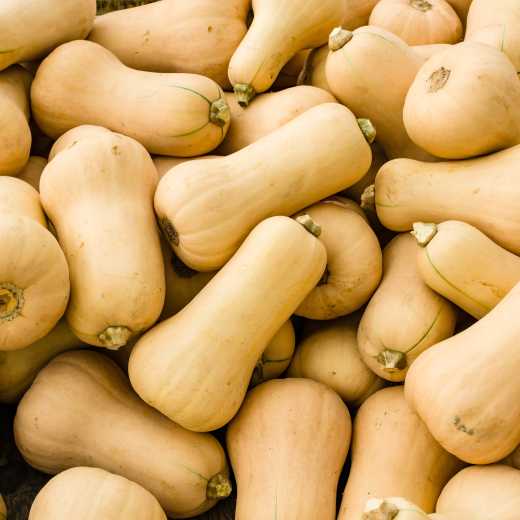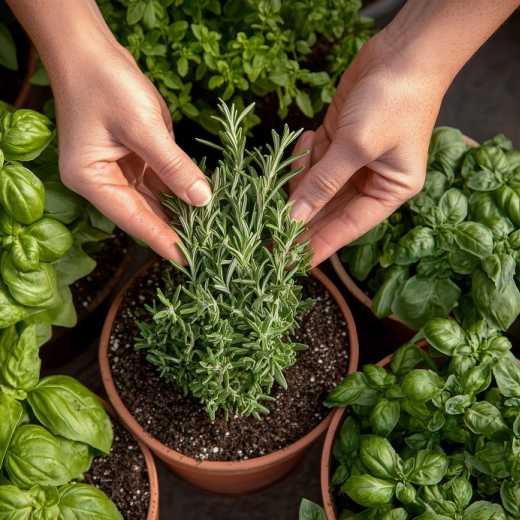The Garden in Winter
Your garden doesn't have to become a brown boring blob in winter. There are many plants whose contrasting forms, textures, and colors add winter interest. Evergreens, along with trees and shrubs with interesting bark or brightly colored stems, add subtle interest as well. Shrubs covered in bright berries, ornamental grasses, and the stems and seed heads of dormant annuals and perennials serve to create sculpture and beauty in the winter landscape. Leaving the dormant foliage on plants provides winter interest, some protection from cold, and food and shelter for birds and wildlife. Wait until we get one of those nice warm days when you want to be outside in late winter or early spring to cut down dormant foliage to get ready for new spring growth.
There are several things you can do to help your plants survive winter. The most important thing you can do for your garden at any time of year is to walk around your yard often and be observant. This is the best way to catch little problems with insects and diseases before they get to be big problems.
Evergreen trees and shrubs often suffer the most during the winter months, especially when conditions are both cold and dry for extended periods. Some of your evergreens may turn a bronze color in the winter, which is natural, but brown isn’t a color you want to see in evergreen plants. If your evergreen turns brown, it almost always means it's a goner. It probably died because of a lack of water and not cold, and that is why it is so important to water evergreens during the winter months if there hasn't been enough rain.
Many of us experienced severe damage and lost some evergreens during the extreme cold two winters ago. I am still dealing with the damage to yaupon and Burford hollies in my landscape. I made sure the damaged plants were watered during the extremely hot dry summer we just endured, and they have grown quickly to fill in the damaged areas. They do not look as good as they did before the freeze killed large portions of some plants; however, they do look much better than they did and are filling in nicely. Hopefully, they will look almost good as new by the end of next season. I was just so glad the entire plants were not killed (I only lost one yaupon holly tree). It would have been much harder and much more upsetting to have to remove mature plants that are twelve feet tall and wide.
Use compost as mulch by piling a 4-inch to 6-inch layer around plants in the winter. Put extra compost around cannas, lantanas, Mexican bush sages, dahlias, pineapple sages, roses, figs, crepe myrtles, and any other plants that are borderline hardy in your area and may be damaged by an extra cold winter. Just rake it off and spread it over the beds in late February. You can also spread extra mulch or leaves around plants to help protect them from winter cold and have a headstart on getting beds ready for next spring.
Deciduous trees and shrubs tend to survive better under extreme and changing conditions because they go dormant for winter. They still may need to be pruned to remove dead wood, open the interior to promote better air circulation to minimize fungal diseases, or merely reshape the plant. Dead branches can be removed at any time; however, wait until right before new growth begins next spring to do major pruning. Don't ever remove more than one-third of any plant at once, because the stress of trying to recover could kill it. Always prune to retain the natural shape of the plant. Don’t just lop off the top growth to create a gumdrop or lollipop shape that will send out a profusion of twigs that are prone to disease and insect damage. DO NOT commit Crepe Murder for the same reason. Not only will it severely damage your plants, but it will also make your plants severely ugly while they are dying.
It's normal for some of your trees and shrubs to have brown leaves clinging to the branches this time of year. Many deciduous plants including oaks, Japanese maples, and hydrangeas often retain their leaves throughout the winter months. Some plants even hold their leaves into early spring when they seem to drop them all at once right before the time for new leaves to emerge. When the plants drop leaves and start forming new buds in spring it is the perfect time to sprinkle some organic fertilizer around them to provide food for the new growing season. Never fertilize in the fall because it will promote new growth that will be killed by freezing temperatures, and never fertilize in winter because the plants are dormant, so it will be wasted.
You can do a lot of useful cleaning up in the garden during the winter, including recycling the potting soil from outdoor container-grown annual plants that have finished their life cycle. Just make sure that the plants are free of disease before you add the potting soil to your compost pile. Break up the root balls and the roots with hand pruners or a sharp knife. After you’ve emptied the pots, clean them with a ten percent solution of water and bleach and store them in a shed or garage. This is especially important for clay pots that absorb moisture and may freeze and crack during the winter. While you are cleaning out containers, blow leaves off the patio or porch so mice and other creatures will not be tempted to move in for the winter.
It is also a good idea to empty rain gauges and ornamental features that hold water before a severe freeze. Water expands when it freezes and can crack glass, clay, concrete, ceramic, and plastic. I've seen large concrete birdbaths that cracked when the water froze during a severe winter. There are small heaters made specifically for birdbaths to keep this from happening. They do double duty by making sure birds have a supply of water during the winter when it is hard for them to find it. Birds will die within a few days if they are not able to find drinking water.
Don't forget to unhook the hoses from the faucets if a hard freeze is expected. Roll hoses up and store them but keep them handy in case there isn’t enough rain and watering is needed. A good hose is an expensive investment, and water in hoses can expand when it freezes and split the hoses. I've heard horror stories of hydrants attached to the house freezing and the pipes inside the house freezing and bursting, causing major damage and costing major money to repair; so, make sure hydrants are insulated and hoses are detached.
Happy Winter Gardening!
National Garden Clubs, Inc. is a 501(c)(3) organization that aims to promote the love of gardening, floral design, and civic and environmental responsibility. There is a local club near you, click here to find one and join. Subscribe to the NGC’s blog by entering your e-mail here. You do not have to be an NGC member to subscribe. NGC welcomes blog article submissions, e-mail the Blog Administrator at blog@gardenclub.org.

 Member Login
Member Login






